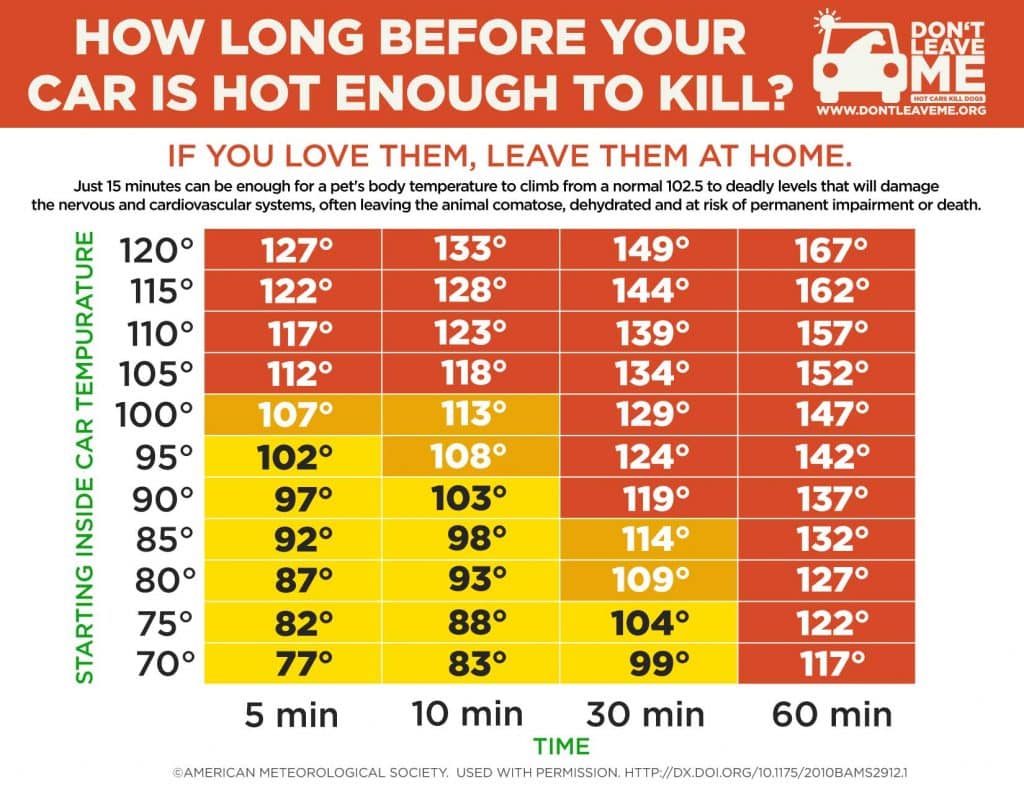Do you know how quickly the temperature escalates inside your parked car in the Arizona heat? It only takes 15 minutes for a pet’s body temperature to reach levels that are damaging to their nervous system and cardiovascular system.
The fact is that pets and hot cars don’t mix, and neither do kids and hot cars, for that matter.
Here are some other devastating facts about heat stroke and its deadly effects when children and pets are left unattended in a parked vehicle in hot weather:
- The American Veterinary Medical Association estimates that hundreds of dogs are reported to have died every year in the United States after being left in a hot car.
- Many more pet deaths from hot cars go unreported.
- Arizona currently ranks fifth per capita for the number of vehicular heatstroke deaths, behind Louisiana, Mississippi, Alabama, and Arkansas.
- During the period of 1998 to 2016, Arizona ranked third per capita.
- A child’s body temperature rises three to five times faster than that of an adult.
This graphic illustrates just how quickly the temperatures inside your vehicle spike:

What if You Leave the Windows Open or the Air Conditioning On?
Even with the windows cracked and the air conditioning on your car can still reach high temperatures within mere minutes that are dangerous for pets and children. Parking in the shade does not minimize this risk, either.
All pets are susceptible to heat stroke, but those especially at high risk are pets that are young, overweight, or elderly, and those with short muzzles and thick or dark-colored coats.
The Samaritan Hot Car Law
In May 2017, Arizona passed a law aimed at putting an end to deaths caused by people leaving children or pets in hot vehicles. The law, known as Arizona HB 2494, allows good Samaritans to use reasonable force to remove a child or pet from a locked, parked motor vehicle.
This law prevents the good Samaritan from being liable for damages in a civil action if they comply with certain conditions:
- The rescuer has a good faith belief that unless the confined child or pet is removed from the vehicle, they are in imminent danger of suffering physical injury or death.
- The rescuer determines the car is locked or there is no reasonable manner in which the person can remove the child or pet.
- Before entering the vehicle, the rescuer notifies the proper authorities (law enforcement).
- The rescuer does not use more force than is necessary under the circumstances to enter the vehicle.
- The rescuer remains with the child or pet until the authorities arrive.
What to Do If You See a Child or Animal Alone in a Parked Car
- Don’t wait for the driver to come back. Call 911 right away to alert them and get instructions for how to help.
- If the child or pet isn’t responsive or is in distress, remove them from the car by any means necessary, move them to a cooler environment, and follow the safety instructions provided by the 911 dispatcher.
- If the child or pet is responsive, stay with them until help arrives, and if possible, ask someone else if they can help locate the driver.








